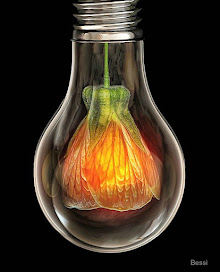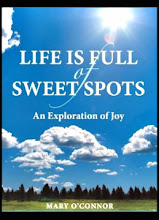 Recommended Reading:
Recommended Reading:Any book in the Reaktion “Edible” series, edited by Andrew F. Smith.
Reason:
Content is short, sweet and packed with interesting information. Savor the subject of your choice; Cheese, Chocolate, Curry, Hamburger, Hot Dog, Pancake, Pie, Pizza or Spices. Forthcoming titles include; Bread, Cake, Caviar, Cocktails, Dates, Fish and Chips, Ice Cream, Lobster, Milk, Pasta, Soup, Tea, Tomato, Vodka, Whiskey and Wine.
Caveat:
Reading these books before going to sleep may induce cravings, especially Pancake.
 Recommended Reading:
Recommended Reading:Alimentum
Reason:
Alimentum is a journal for food lovers by food lovers. Its pages are filled with fiction, poetry and essays that are authentic, imaginative and at times heartbreakingly beautiful. Think that the bittersweet taste of love and caramelized Scandinavian goat cheese aren’t related? Think again: “...In time I would taste all kinds of desire, too, from piquant longing to salty lust; from pungent infatuation to tart jealousy; from sour envy to saccharine adulation. Yet never again would the sweetness of longing be so perfectly balanced with the musky, gamey saltiness of lust as it was that summer…” (You’ll have to buy issue nine of Alimentum to read the rest of Peter Selgin’s Gjetost.)
Caveat:
Alimentum is published bi-annually. Quality content makes it hard to wait six months for the next issue's arrival.
Reason:
Alimentum is a journal for food lovers by food lovers. Its pages are filled with fiction, poetry and essays that are authentic, imaginative and at times heartbreakingly beautiful. Think that the bittersweet taste of love and caramelized Scandinavian goat cheese aren’t related? Think again: “...In time I would taste all kinds of desire, too, from piquant longing to salty lust; from pungent infatuation to tart jealousy; from sour envy to saccharine adulation. Yet never again would the sweetness of longing be so perfectly balanced with the musky, gamey saltiness of lust as it was that summer…” (You’ll have to buy issue nine of Alimentum to read the rest of Peter Selgin’s Gjetost.)
Caveat:
Alimentum is published bi-annually. Quality content makes it hard to wait six months for the next issue's arrival.
 Recommended Reading:
Recommended Reading:Gastronomica, published by the University of California Press.
Reason:
Whining about the loss of Gourmet won’t bring the magazine back (though television is likely to be the medium of resurrection for Ruth Reichl). Gastronomica gives you an opportunity to sink your teeth into the culture of food with an intellectual bend. Literature, essays, history and book reviews abound in this quarterly, though some content is more eclectic than others. Don’t deny the needs of your inner geek. Pull up those pants, tighten that belt buckle and nerd up.
Caveat:
Parting with Gastronomica is difficult. Stylish covers rendered in high “art school” style make every issue perfect for the coffee table.
 Recommended Reading:
Recommended Reading:On Food and Cooking: The Science and Lore of the Kitchen by Harold McGee
Reason:
On Food and Cooking is the consummate “book of why” for every food question imaginable. From the simple to the technical McGee, the father of molecular gastronomy, makes food science approachable and interesting. “Flavorings from Plants: Herbs, Spices, Tea and Coffee,” the eighth chapter, will fascinate foodies with aromatic descriptor charts a la perfumer Jean Carles. The book had a profound influence on the Fat Duck’s Heston Blumenthal; he became a chef after reading the 884 page book from cover to cover.
Caveat:
This book is meant to be savored. Resist the temptation to take a week off, curl up on the couch and read the whole damn thing.
Reason:
On Food and Cooking is the consummate “book of why” for every food question imaginable. From the simple to the technical McGee, the father of molecular gastronomy, makes food science approachable and interesting. “Flavorings from Plants: Herbs, Spices, Tea and Coffee,” the eighth chapter, will fascinate foodies with aromatic descriptor charts a la perfumer Jean Carles. The book had a profound influence on the Fat Duck’s Heston Blumenthal; he became a chef after reading the 884 page book from cover to cover.
Caveat:
This book is meant to be savored. Resist the temptation to take a week off, curl up on the couch and read the whole damn thing.
 Recommended Reading:
Recommended Reading:Salt: A World History by Mark Kurlansky
Reason:
Don’t let every bad history teacher you’ve ever had stand between you and this book. Kurlansky is an engaging storyteller who unearths myth, history and intrigue out of an ingredient many of us take for granted (forget about salt throwing superstitions, if you didn’t eat salt you’d be dead). Over consumption of salt derived from chemical processing, versus cultivation via sea water and rock deposits, has demonized an ingredient that deserves a closer look and a little more love.
Caveat:
An increased desire to read books based on single culinary ingredients may follow. Finding a raconteur like Kurlansky will not.
 Recommended Reading:
Recommended Reading:Herbs and Spices: The Cook’s Reference by Jill Norman
Reason:
Herbs and Spices: The Cook’s Reference is a sensualist’s dream. Each entry includes information on tasting notes, parts of the plant used, buying and storing, growing your own, culinary uses and suggested combinations. Jill Norman is a culinary doyenne when it comes to herbs and spices (she’s a trustee of the estate of Elizabeth David). Her publisher, Dorling Kindersley Limited, has spared no aesthetic expense in the design of the book; lush photography illustrates every page.
Caveat:
This is the Holy Grail when it comes to books on herbs and spices. Ian Hemphill’s Herb & Spice Bible is a close second, followed by Elizabeth Lambert Ortiz’ The Encyclopedia of Herbs, Spices and Flavorings.
Reason:
Herbs and Spices: The Cook’s Reference is a sensualist’s dream. Each entry includes information on tasting notes, parts of the plant used, buying and storing, growing your own, culinary uses and suggested combinations. Jill Norman is a culinary doyenne when it comes to herbs and spices (she’s a trustee of the estate of Elizabeth David). Her publisher, Dorling Kindersley Limited, has spared no aesthetic expense in the design of the book; lush photography illustrates every page.
Caveat:
This is the Holy Grail when it comes to books on herbs and spices. Ian Hemphill’s Herb & Spice Bible is a close second, followed by Elizabeth Lambert Ortiz’ The Encyclopedia of Herbs, Spices and Flavorings.
 Recommended Reading & Huffing:
Recommended Reading & Huffing:Les Coulisses du Parfum Series, Volume IV: Vibrations of Spices (Ozmoz.com)
Reason:
Engaging the sense of smell improves the sense of taste. The folks at Firmenich, the flavor and fragrance company behind Osmoz.com, worked with renowned perfumer Annie Buzantian to create an olfactive spice kit. Essences include clove, nutmeg, saffron, coriander, black pepper, Sichuan pepper, pink pepper, ginger, cardamom, everlasting, cinnamon and cumin. P.S. Dipping blotters and educational brochure included.
Caveat:
The scent kit includes Immortelle flower (a raw material that produces a honeyed spice effect, but isn't technically a spice). Though all of the essences in Vibrations of Spices are derived from natural sources, the saffron tincture is a fantasy that riffs on the hedonic/musky facet of the spice.* Supporting olfactive explorations with actual spices takes this exercise to the proper level of connoisseurship. The Spice House sells ingredients in small amounts that make this suggested tweak easy to apply.
 Recommended Reading:
Recommended Reading:Wellness Foods from A-Z by Sheldon Margen M.D. and the editors of the University of California, Berkeley Wellness Letter.
Reason:
Wellness Foods from A-Z is geared towards readers who seek to optimize health through nutrition. It is an encyclopedic reference book that analyzes the benefits of food as well as offering tips on shopping, preparation and storage. The current edition of Wellness Foods from A-Z is out of print though an updated version is likely.
Caveat:
This is a book that family members borrow and never return. Keep an extra copy well hidden.
Notes:
The Spice House' website is filled with delightful information on herbs and spices. Every page has a delicious food quote and every product for sale has a unique story on the label. You can follow the owner's tweets here.
*True saffron is rarely used in perfumery due to cost and the presence of safrole, a skin irritant and possible carcinogen. Eating saffron does not pose a danger as small amounts are used in cooking and baking. Consuming saffron has several benefits. Read this post to learn more.
Reason:
Wellness Foods from A-Z is geared towards readers who seek to optimize health through nutrition. It is an encyclopedic reference book that analyzes the benefits of food as well as offering tips on shopping, preparation and storage. The current edition of Wellness Foods from A-Z is out of print though an updated version is likely.
Caveat:
This is a book that family members borrow and never return. Keep an extra copy well hidden.
Notes:
The Spice House' website is filled with delightful information on herbs and spices. Every page has a delicious food quote and every product for sale has a unique story on the label. You can follow the owner's tweets here.
*True saffron is rarely used in perfumery due to cost and the presence of safrole, a skin irritant and possible carcinogen. Eating saffron does not pose a danger as small amounts are used in cooking and baking. Consuming saffron has several benefits. Read this post to learn more.










